Preventing Ebola: The power of proactive vaccination
What does it take to stop the spread of Ebola? From Rwanda, Devex takes a look at the vaccination campaigns happening on the country’s borders.
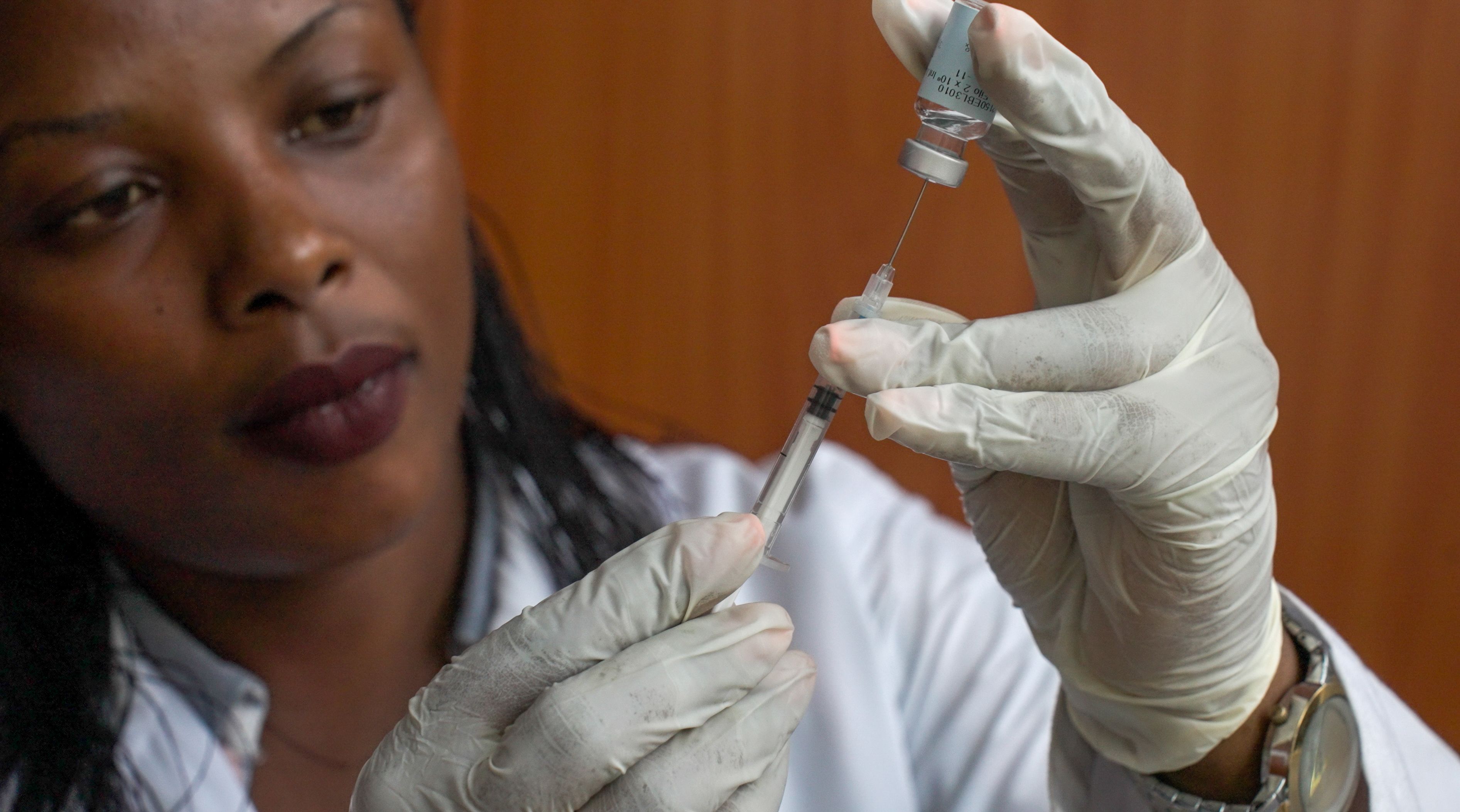
SPONSORED BY


So still and vast, Lake Kivu is the sixth largest lake in Africa, separating Rwanda from its neighbor, the Democratic Republic of Congo, and acting not only as a partial border but as a divider between a population that has experienced Ebola and one that has been lucky enough to only fear it.
“They talk about how Ebola spreads and how it kills. We would hear that and be traumatized,” said Acquila Ange Mukandengo, a 32-year-old mother of four living in Rubavu district in north-western Rwanda. Sitting in Gisenyi Hospital’s maternity clinic, located 2.5 kilometers (1.5 miles) away from the DRC border, she cradles her sleeping 2-year-old child while sharing how Ebola brings to mind harrowing images of bleeding from body parts.
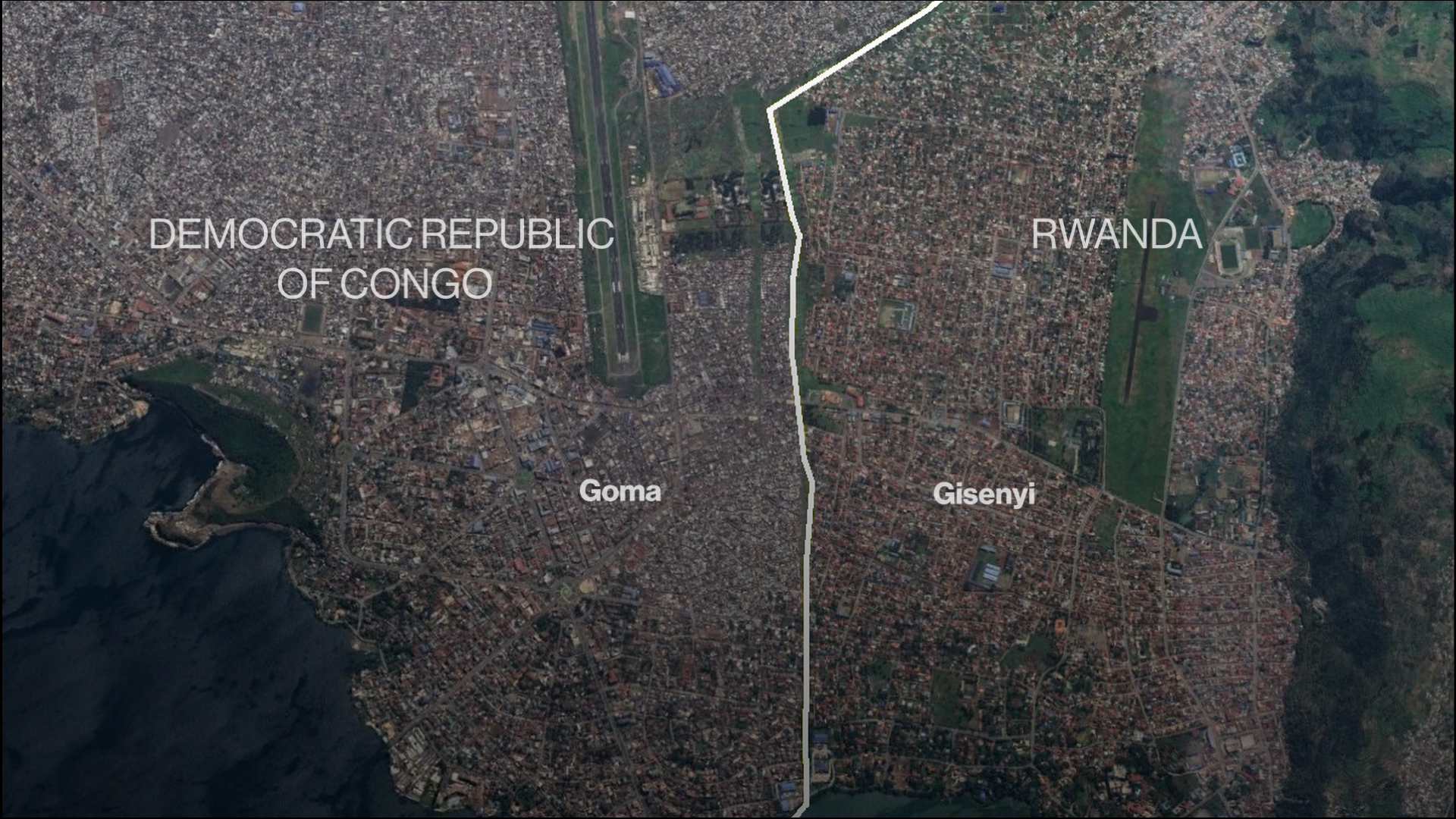
The towns of Goma and Gisenyi are separated by a single road that marks the border between DRC and Rwanda.
The towns of Goma and Gisenyi are separated by a single road that marks the border between DRC and Rwanda.
While Rwanda has never had an outbreak, the DRC, a five-minute drive away, has endured 14 since the disease was identified in 1976. The most recent began in August 2022 and while it was officially declared over by September, the threat of another outbreak lingers. Uganda, another neighbor to Rwanda, recently grappled with an outbreak of the Sudan strain of the virus.
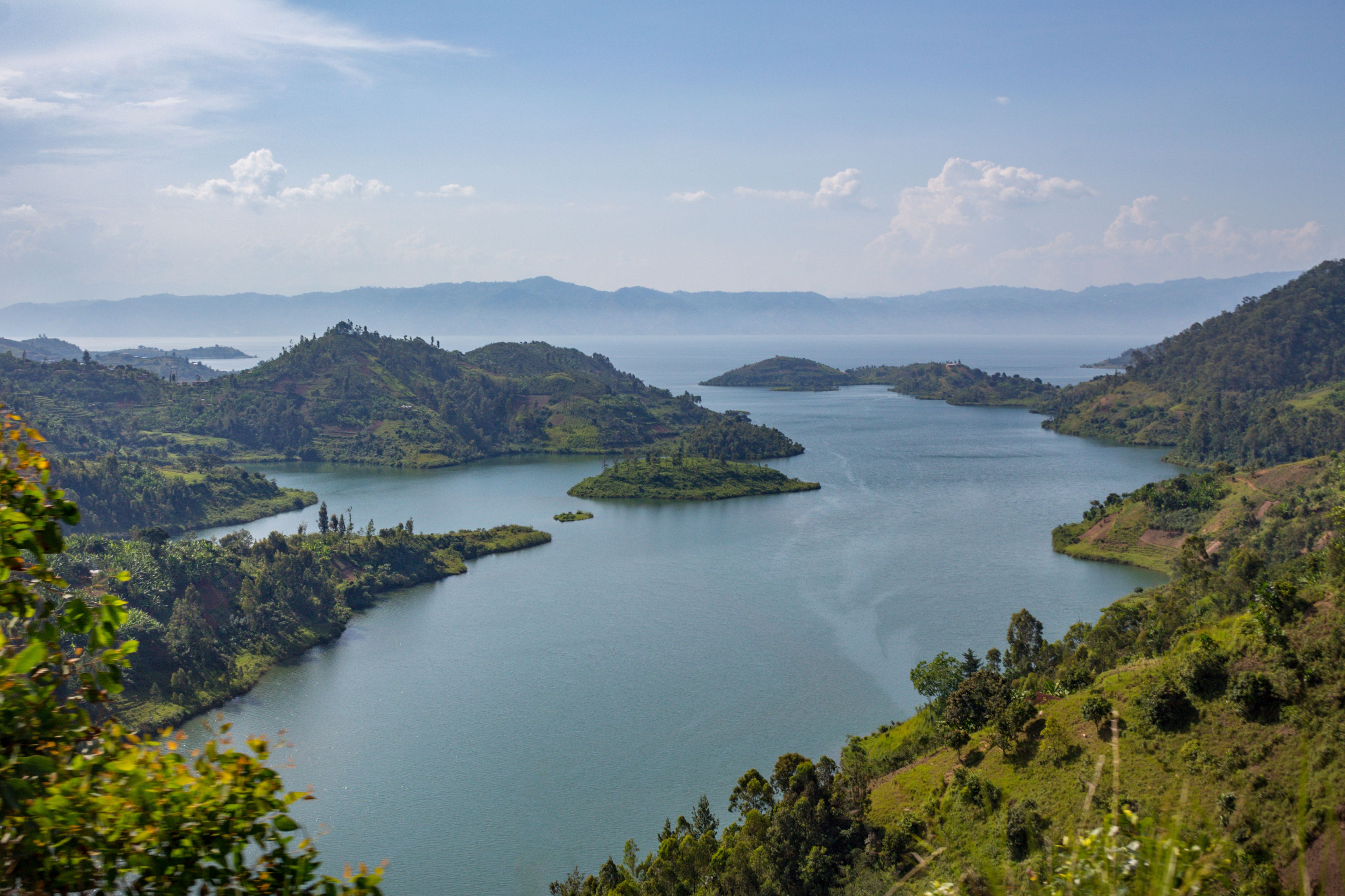

A view from the grounds of Gisenyi hospital looking towards the Mount Nyiragongo volcano, which lies across the border in DRC.
A view from the grounds of Gisenyi hospital looking towards the Mount Nyiragongo volcano, which lies across the border in DRC.
Initially presenting as a headache, fatigue, diarrhea, vomiting, and fever, in a matter of days the Ebola virus disease, or EVD, can morph into bleeding from body parts and kills 50% of its victims. Transmitted via body fluids, over the decades, a total of 34 outbreaks have invoked terror in many African communities and claimed over 14,823 lives, according to figures from 2020. The majority of those, 11,310, took place during the 2014–2016 episode, which emerged in Guinea before seeping into Sierra Leone and Liberia.
Ebola is the biggest health threat to the people on the Rwandan border, said Dr. Edouard Nkubito Mirimo, a study physician from Center for Family Health Research for the Ingabo clinical trial, based at Gisenyi Hospital, who shares his thoughts before seeing the day’s patients. “I'm worried about the risk of [the population of Rubavu] getting infected with EVD … because they cross the border several times [a day],” he said. In 2019, it was reported that up to 90,000 people crossed the Rwanda-DRC border daily, mainly for work.
The Rwandan government isn’t relying on sheer luck to keep the virus at bay. Since 2018, it’s taken proactive measures to protect its population.

Dr. Edouard Nkubito Mirimo, a general practitioner based at Gisenyi Hospital.
Dr. Edouard Nkubito Mirimo, a general practitioner based at Gisenyi Hospital.
“At the border, health care workers are screening the population for fever and other potential symptoms for EVD,” said Dr. Etienne Karita, a scientist and country director of Center for Family Health Research, a Kigali-based clinical research organization. “We've been educating people not to cross the border without any reason. … Also we took measures to make sure that our health care system is prepared.”
According to the World Health Organization, good outbreak control includes infection prevention and control practices, case management, surveillance and contact tracing, adequate laboratory services, as well as safe and dignified burials. Ebola can be contracted via the handling of an infected body.
At Gisenyi Hospital, Mirimo said personal protective equipment, long-distance temperature tools, and isolation rooms are always prepared just in case.
Taking it one step further, Rwanda is among the first countries to have administered vaccines for the prevention of Ebola.
Efforts to vaccinate as a response

The deadly reign of Ebola from 2014 to 2016 in West Africa triggered a swath of research not only into how to treat Ebola but how to prevent it. Among that research were numerous vaccines.
Janssen, the pharmaceutical company of Johnson & Johnson, which has been working on Ebola since 2002, is behind one of the vaccines developed against the Zaire strain. Working with collaborators in Rwanda and the DRC, Johnson & Johnson deployed the two-dose regimen – comprising ZABDENO (Ad26.ZEBOV) and Bavarian Nordic’s MVABEA (MVA-BN-Filo) – in 2018. The regimen has European Commission approval, WHO prequalification status, and marketing authorization has been approved in both Ghana and Côte D’Ivoire.
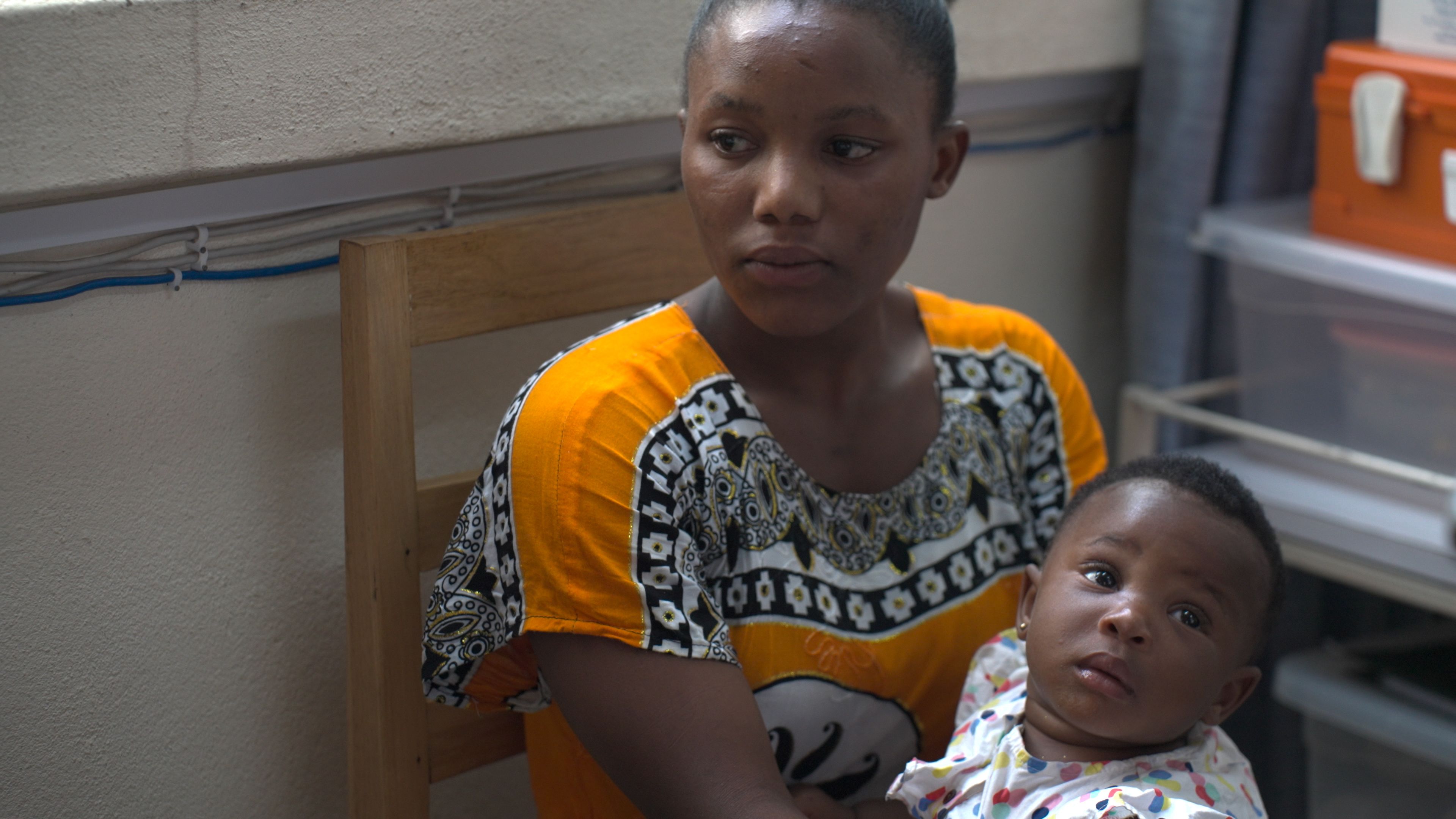
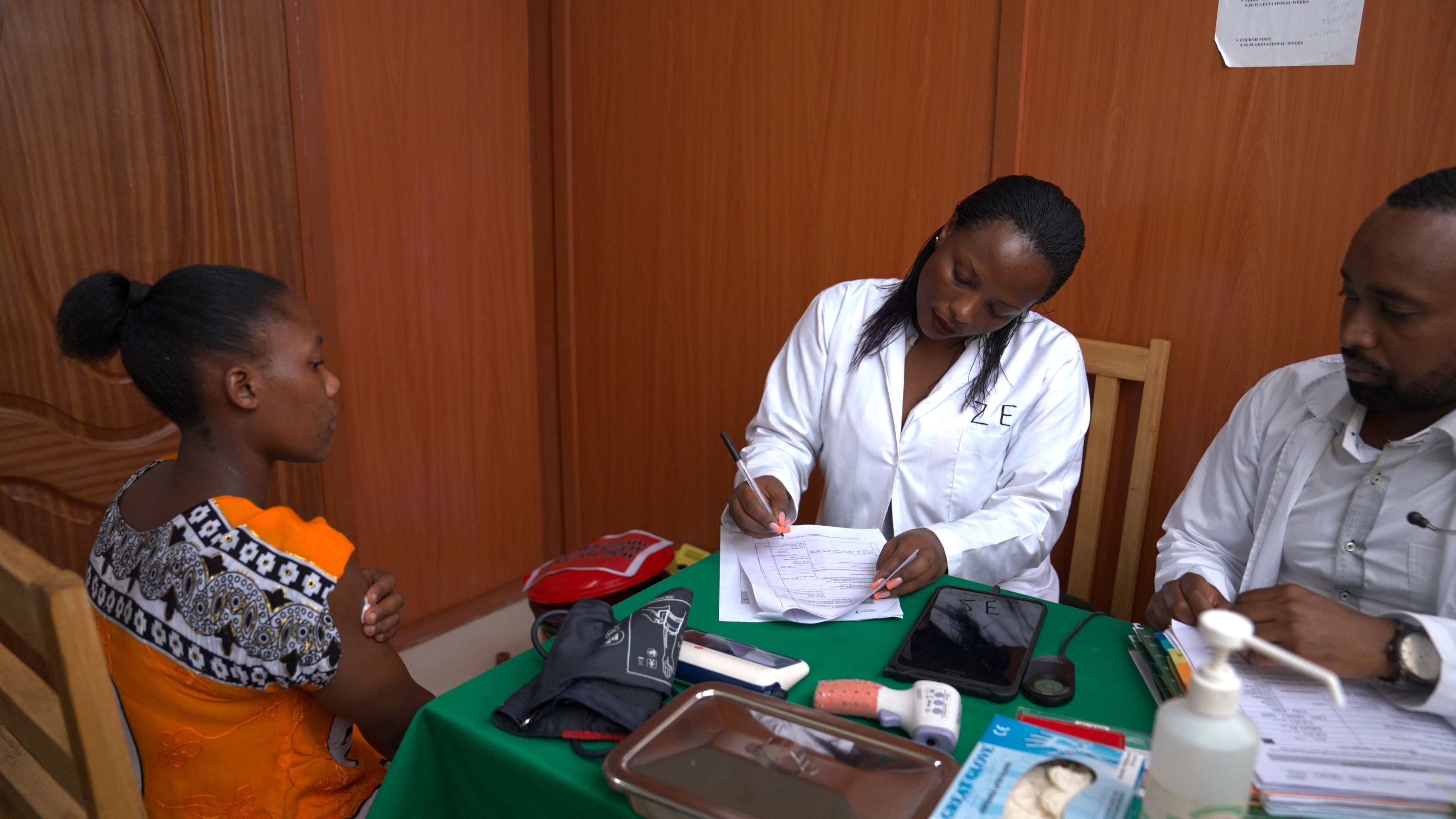

Rebecca Ntakirutimana, a 20-year-old mother of one, is one of the women who took part in the Ingabo trial, which evaluates the safety profile of J&J Ebola vaccine among pregnant women.
Rebecca Ntakirutimana, a 20-year-old mother of one, is one of the women who took part in the Ingabo trial, which evaluates the safety profile of J&J Ebola vaccine among pregnant women.

Dr. Douce Ndizeye and Dr. Edouard Mirimo administer the second dose of J&J's Ebola vaccine.
Dr. Douce Ndizeye and Dr. Edouard Mirimo administer the second dose of J&J's Ebola vaccine.
The J&J vaccine induces long-term immune responses among communities, explained Jos Noben, former senior director for capacity development in J&J’s global public health research and development team. “This [vaccine] means that the population gets protected even before the virus can spread to this area,” CFHR’s Dr. Karita added. In contrast, other vaccines are designed only for those who come into contact with an affected person amid an outbreak.
Clinical trials of the vaccine in the United States, Europe, and Africa indicated “durable immune responses” to the Zaire strain, which has been behind all Ebola outbreaks in the DRC to date.
From 2018 to 2020, the DRC experienced the second-largest Ebola outbreak and J&J pledged 500,000 regimens of its vaccine to assist in prevention. Seeing the outbreak over the border, Rwanda took action to prevent the potential for spread.
“The Ministry of Health decided not to wait until cases crossed the border,” said Karita. “They knew that there was an Ebola vaccine that was available that could potentially prevent the transmission of the virus.”
In 2019, under the project name Umurinzi, the Rwanda Biomedical Center, CFHR, Rwandan health promotion organization Rinda Ubuzima, and J&J began distributing the J&J vaccine at 14 different sites, including Gisenyi Hospital, among the border districts of Rubavu and Rusizi. More than 216,000 people were vaccinated and of those, 94% of people received both doses.
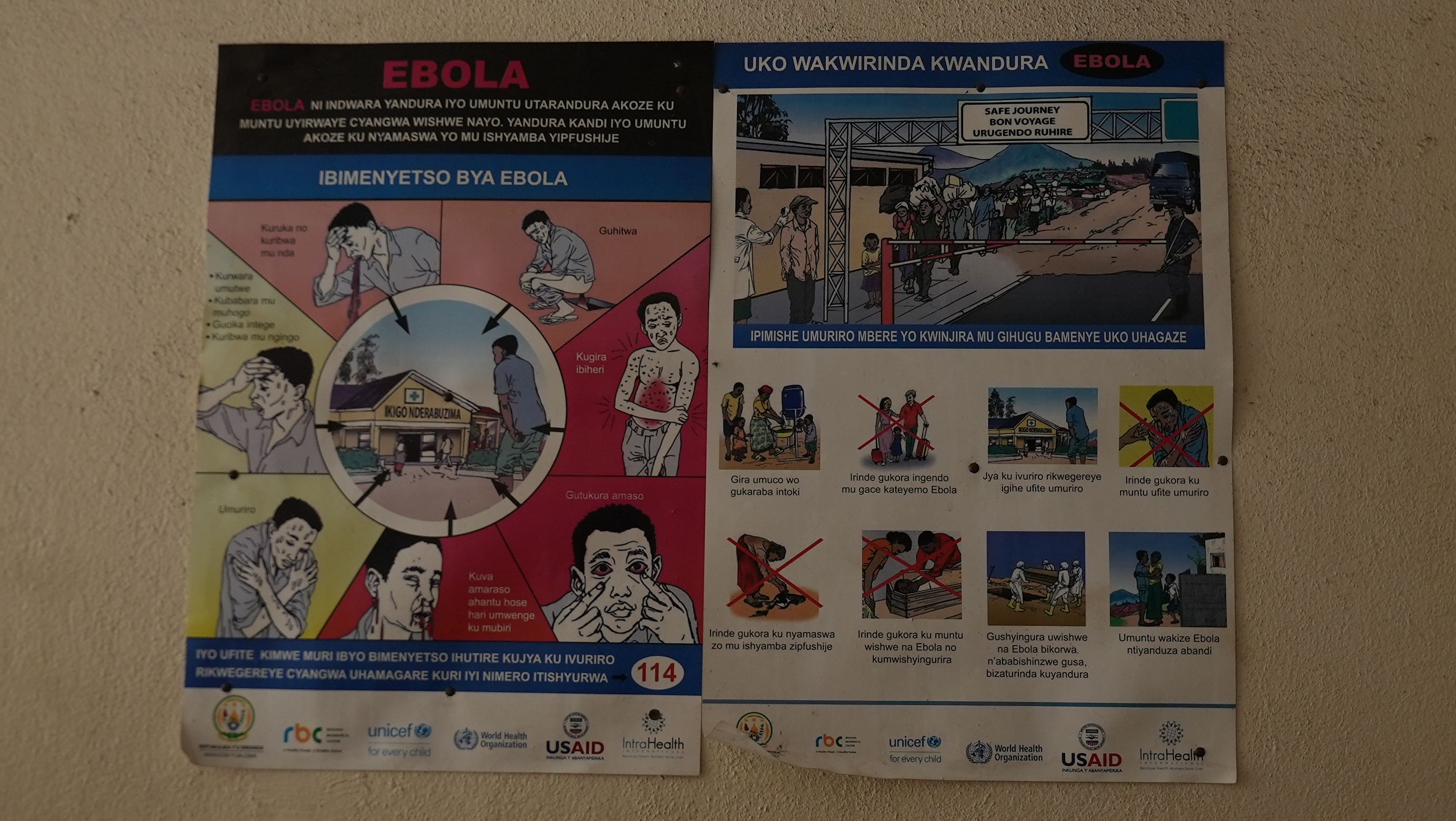
A poster at Gisenyi Hospital outlining the signs and symptoms of Ebola.
A poster at Gisenyi Hospital outlining the signs and symptoms of Ebola.
The high adherence rate demonstrates that "with support from political leaders, local communities, [and] other stakeholders in the community, it's possible to launch a large, multidose vaccination campaign like the one we launched here in Rwanda,” said Karita, who was the principal investigator of Umurinzi.
An extension of the program which targets pregnant women, called “Ingabo,” is currently underway in two district hospitals. Mukandengo was vaccinated at seven months pregnant and says she is “no longer afraid of Ebola.”
Pregnant women were excluded from the first phase of Umurinzi, but it’s important they get vaccinated because during pregnancy the immunity is lowered, said Mirimo, who is the Ingabo trial’s study physician. Ingabo aims to evaluate the safety profile among pregnant women, a group specifically vulnerable to high morbidity and mortality from Ebola.
Mirimo, who sees numerous pregnant women a day, explained that half of the 2,000 women in the trial received the vaccine while pregnant and a control group received it after giving birth.
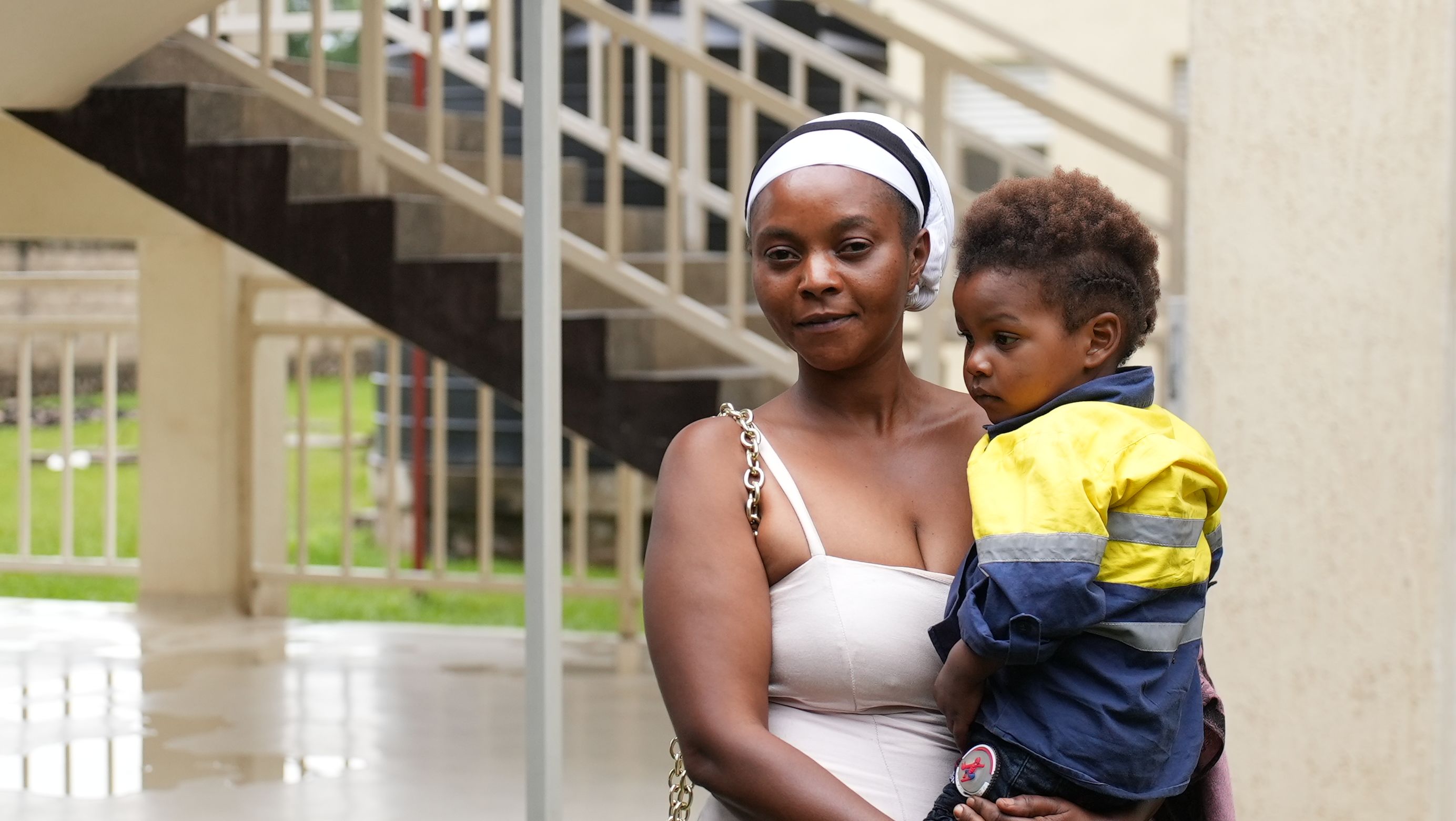
Acquila Ange Mukandengo, one of the participants in the Ingabo Ebola vaccine trial in Gisenyi.
Acquila Ange Mukandengo, one of the participants in the Ingabo Ebola vaccine trial in Gisenyi.
Mukandengo was approached during one of her prenatal checkups, but initially had reservations. A night of talking it over with her husband meant she had questions, not least about the risk it would pose to her baby. “We thought there would be other side effects of the vaccine,” she said. But after continued discussions with the doctor, she felt reassured and now believes every pregnant woman should get vaccinated.
While recruitment of participants for the Ingabo trial wasn’t necessarily difficult, Brigitte Ndandali, Ingabo clinical trial site coordinator for Rubavu district, said such concerns weren’t uncommon. Some felt it was a lot of vaccines to receive while pregnant, as rollout began around the time people were being vaccinated against COVID-19. Others were put off by rumors and misinformation, she said.
Rebecca Ntakirutimana, a 20-year-old mother of one who lives in the nearby village of Nyabagoro, said she heard a lot of rumors when considering whether to take part. “Some told me ‘You will lose your child if you go through this.’ Others said ‘Your baby will turn into a snake,’” she said.
Some people in the community believe vaccines are a form of black magic, Ndandali explained. Vaccine hesitancy amid fear of adverse effects has been on the rise in general since COVID-19.
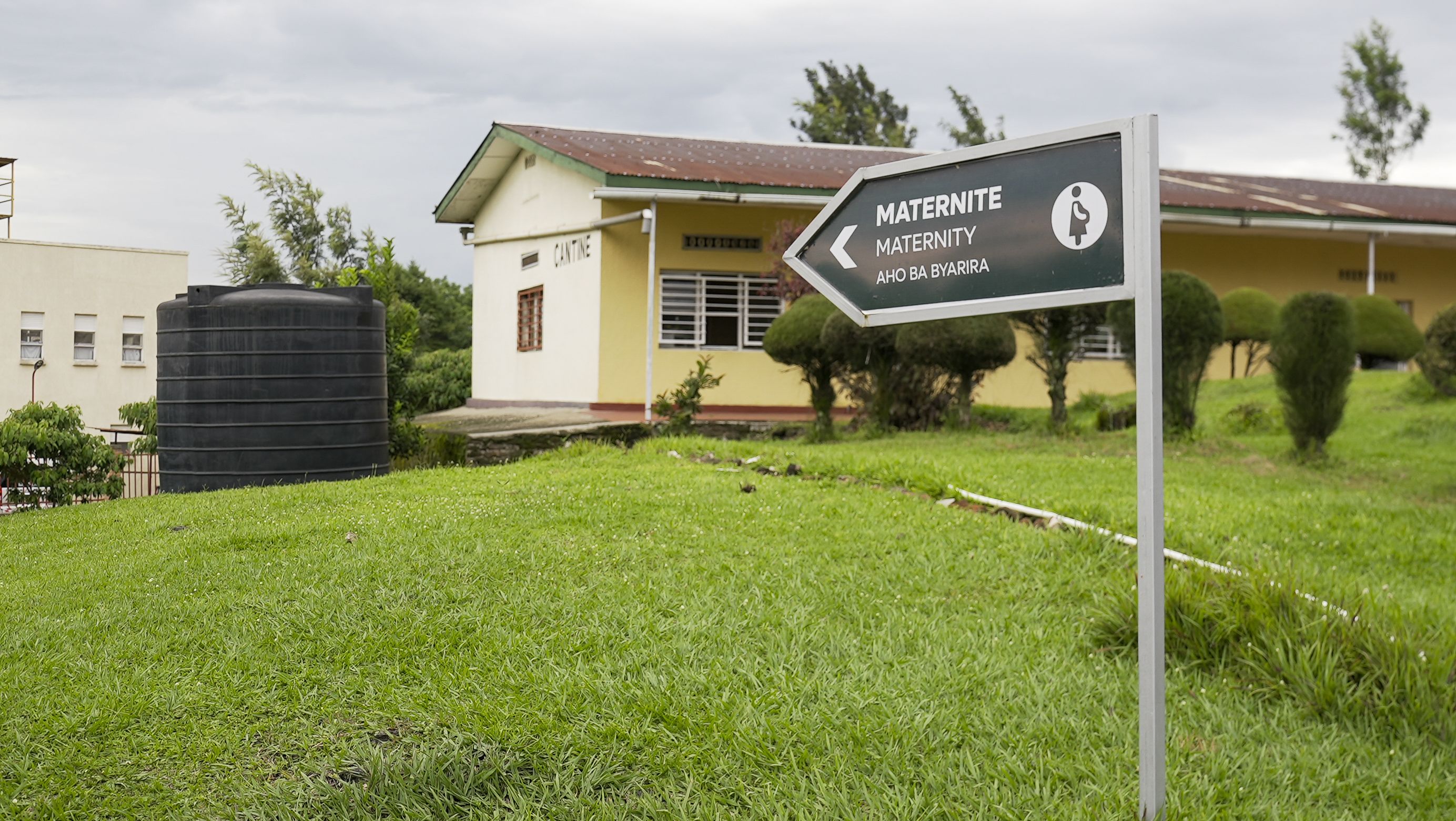
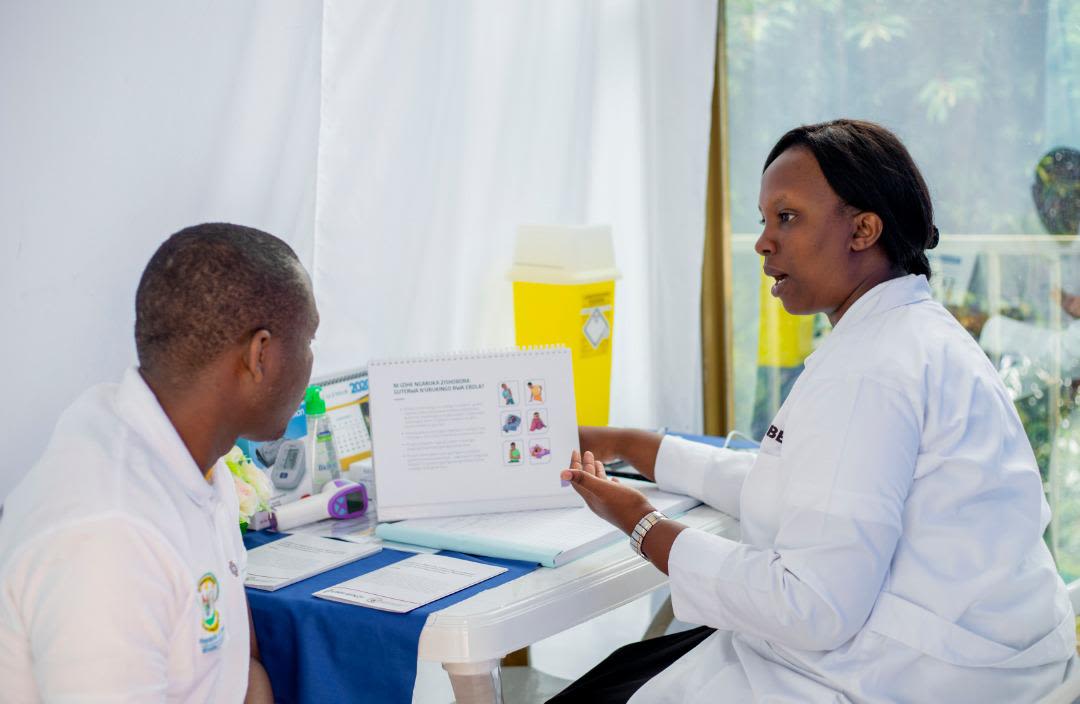
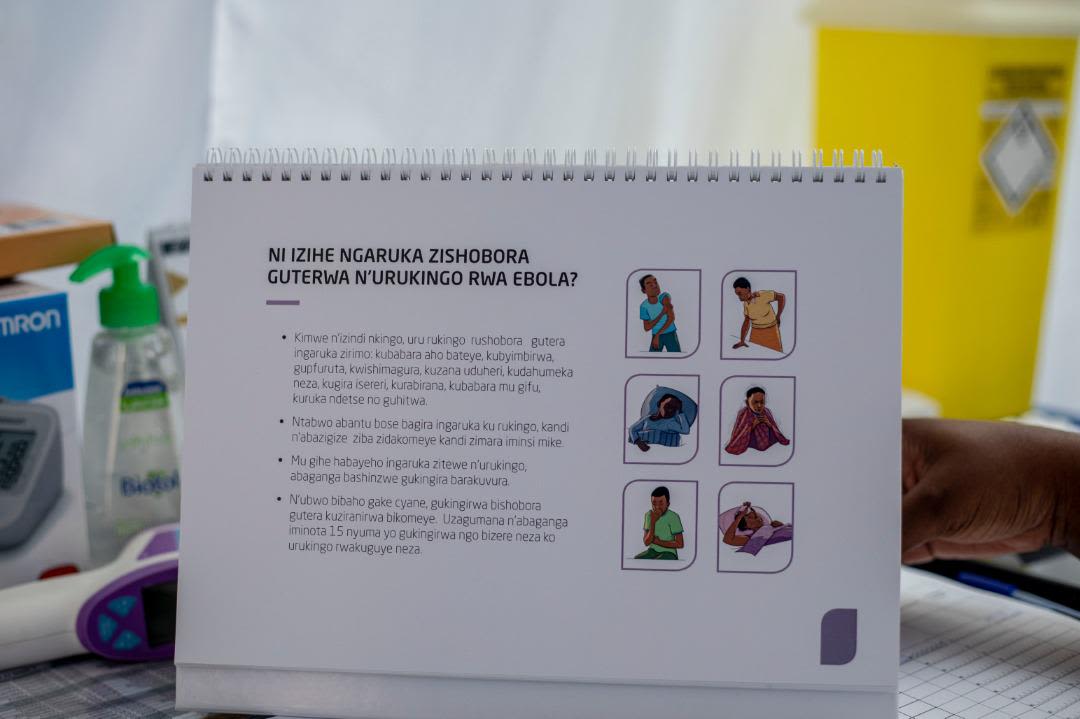
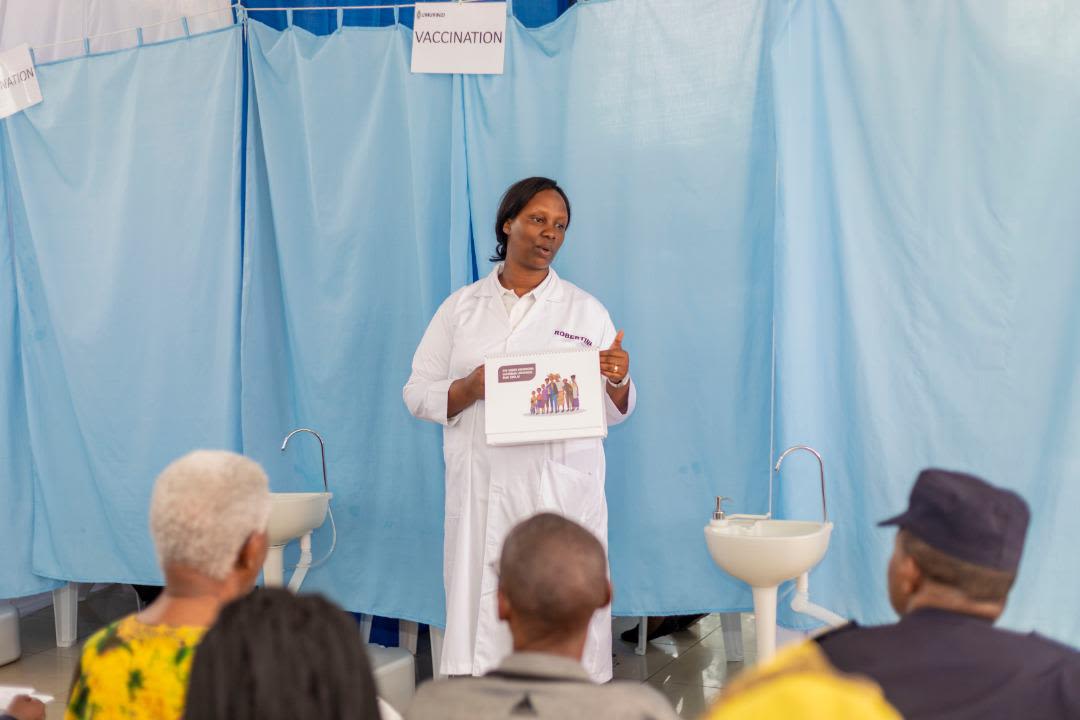

The Umurinzi vaccination campaign took place at 14 different sites, including Gisenyi Hospital, among the border districts of Rubavu and Rusizi.
The Umurinzi vaccination campaign took place at 14 different sites, including Gisenyi Hospital, among the border districts of Rubavu and Rusizi.

More than 216,000 people were vaccinated and of those, 94% of people received both doses.
More than 216,000 people were vaccinated and of those, 94% of people received both doses.

Community health workers worked on an awareness-raising campaign that explained what Ebola is, the risks of being near the DRC, and the value of vaccination.
Community health workers worked on an awareness-raising campaign that explained what Ebola is, the risks of being near the DRC, and the value of vaccination.
To tackle this, community health workers worked on an awareness-raising campaign that explained what Ebola is, the risks of being near the DRC, and the value of vaccination. Health workers also attended regular community meetings with local leaders and trial participants, who provided testimonies to help curtail rumors.
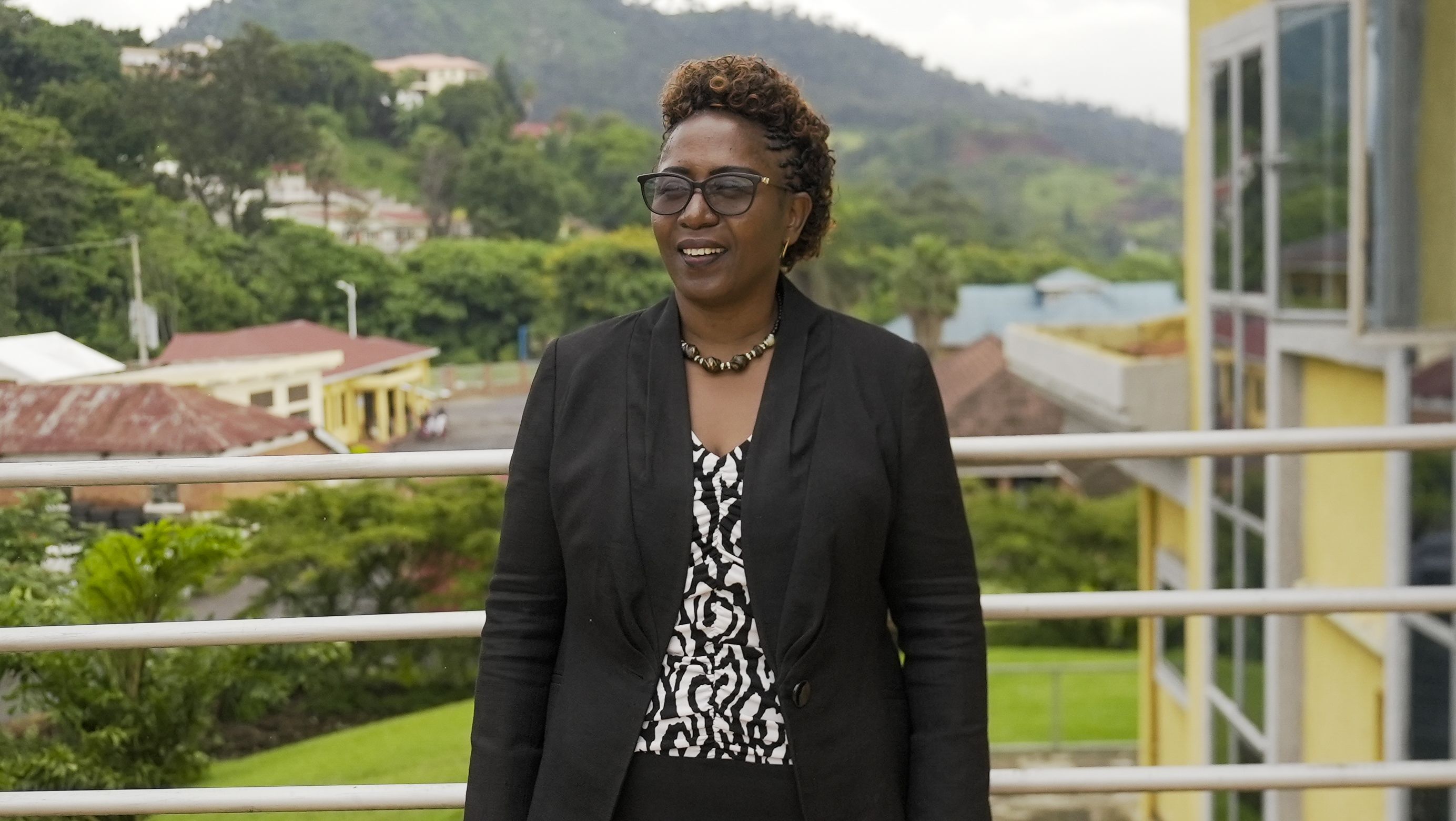
Brigitte Ndandali, Ingabo clinical trial site coordinator for Rubavu district.
Brigitte Ndandali, Ingabo clinical trial site coordinator for Rubavu district.
“We started to do group education sessions every morning. In those sessions, we invited participants who had already delivered … to give their testimony. That helped retention,” Ndandali said.
After taking patients’ vitals and doing a thorough checkup, Mirimo said participants were also able to ask questions and take the time to process the information.
All of this meant that when the time came for Ntakirutimana to get her first dose, she wasn’t scared. “Because I know how beneficial it is, I cannot criticize it,” she said.
Beyond a vaccine

Community engagement and awareness raising is just one aspect of what J&J calls the three-pronged approach to holistic vaccination. Technology and capacity building within supply chain management, logistics, and vaccination implementation are others.
Jos Noben, former senior director for capacity development in J&J’s global public health research and development team, explains the challenges involved in getting vaccines from J&J's manufacturing site in Beerse, Belgium, to hospitals and health centers in Rwanda.
Transporting the vaccines from J&J’s warehouses in Beerse, Belgium, to local vaccination centers in Rwanda is a long and complex process, Noben explained. “A cold chain has to be involved, so this means you need to build capacity to keep your vaccines frozen at [minus 20 degrees Celsius],” Noben said. “The process goes beyond the vaccine getting to the hospital; there is also the logistical setup [and] the training of the nurses, the doctors, and the pharmacists.” Karita said the Umurinzi program helped strengthen the cold-chain technology and staff capacity then needed for the COVID-19 vaccination.
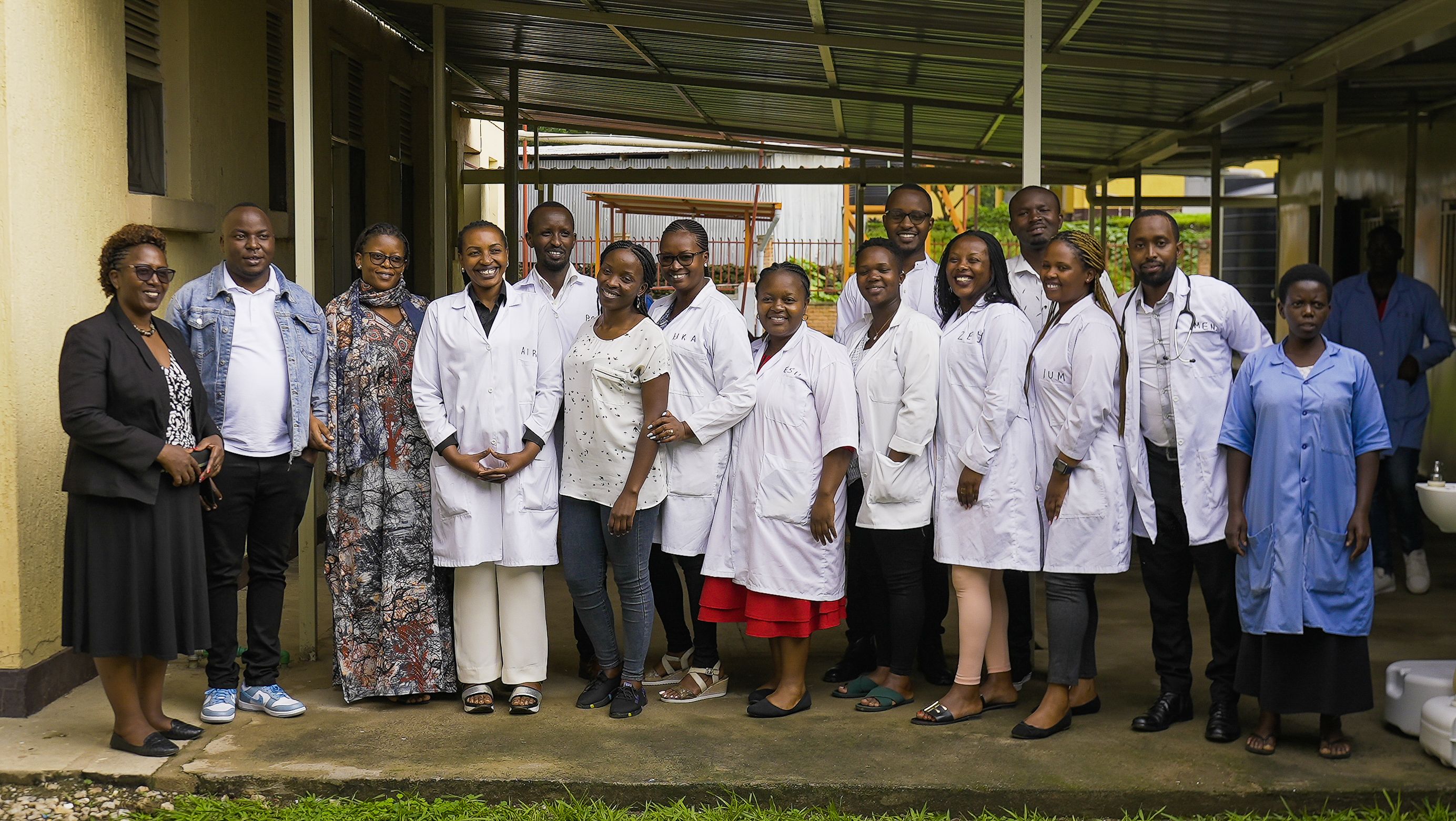
The Ingabo clinical trial staff at Rubavu site, Gisenyi Hospital.
The Ingabo clinical trial staff at Rubavu site, Gisenyi Hospital.
Mirimo believes the mass COVID-19 vaccination program that has taken place since Umurinzi but amid Ingabo has helped make people more aware of the need for preventive vaccination. “The population now understands the need of getting vaccinated for prevention of disease. They get used [to] this process, and also health care providers are now experienced,” Mirimo said. “We learned how to recruit, how to sensitize the population, how to welcome the participant when they arrived at the site. We learned how to explain to the participants the procedures and to prevent rumors if any should arise.”
It also provided the first opportunity for a large-scale rollout of J&J’s open-source vaccination monitoring platform, Vxnaid, which included automated phone reminders and several participants could call to ask questions and give feedback. It’s supplemented by innovative iris scanning technology linked to patient profiles and a dashboard enabling health care workers to monitor real-time adherence.
“These technologies were key to the success of the Umurinzi program. [They] helped us really keep a very close finger on the pulse on every moment of development,” said Noben, adding that the suite of technology contributed to the high level of adherence.
The value of proactive vaccination in pandemic preparedness
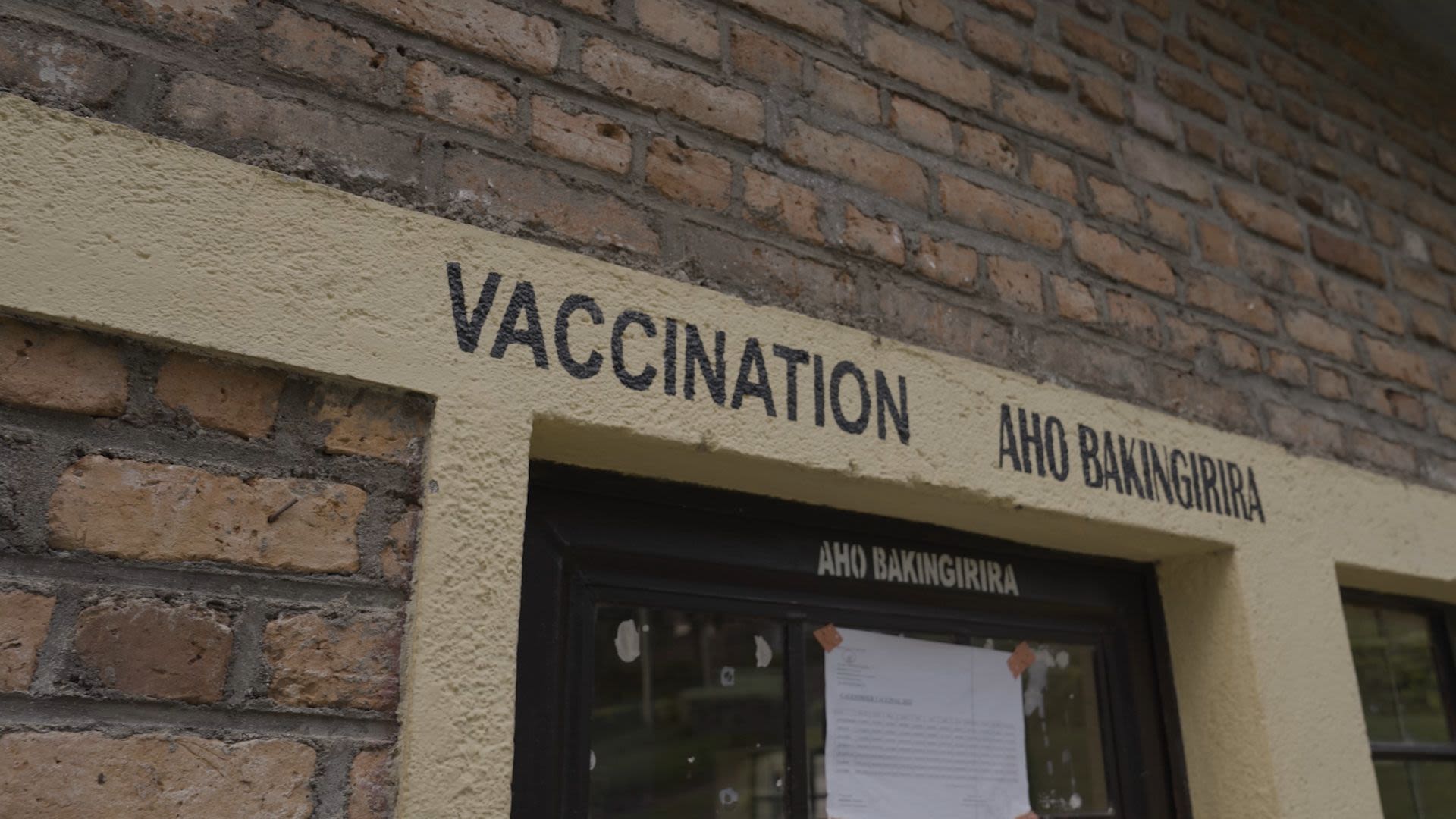
“The next steps are to reach out to other places in the world, other regions where Ebola is endemic,” Noben said. “We want to be sure that we can build capacity for healthy community immunization in areas where Ebola is possible to arise so preventative vaccines can be deployed without losing time and also without too [many] impacts on the people.”
This is doable, said Karita. Already, J&J has pledged up to 206,000 doses of the Ebola vaccine regimen to health care workers in Guinea. “What we’ve learned from this Umurinzi vaccination campaign … is that really it's not magic, it's doable. … If this program was successfully implemented in Rwanda, I do not see any reason why the program cannot be replicated in other contexts,” he said.
The main barrier to this, according to Noben, is shifting the mindset on Ebola to preventative rather than reactive strategies.
“It’s important for governments, multilaterals, and funders to see with their own eyes that a reactive approach is always more disturbing to the health system. In an outbreak, you have to fly in people from abroad, you have to rely very much on outside players to help you out,” Noben said. “It’s much better to have strengthened local systems and people, developed through a preventative proactive approach, so should an outbreak occur, resilience is already established. Governments can maneuver into the right direction step by step, with their own capabilities, not flown in from afar.”
Karita and Noben believe that through Umurinzi and the ongoing Ingabo campaigns Rwanda has demonstrated how the status quo on Ebola can evolve. “Once you have people aligned, working in the right direction, and see the potential healthy community campaigns offer, like preventing one of the worst infectious diseases, you can go from a plan to a reality fast,” said Noben.

Video and photos: Scoop Mex / Naomi Mihara
Video editor: Samantha Keon
SPONSORED BY

